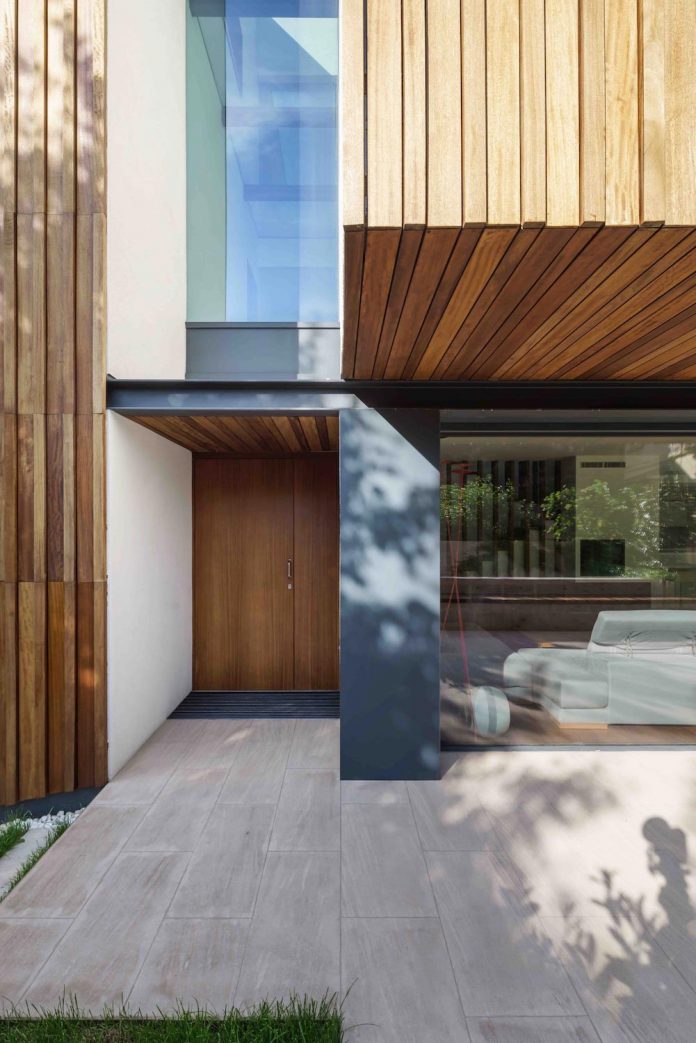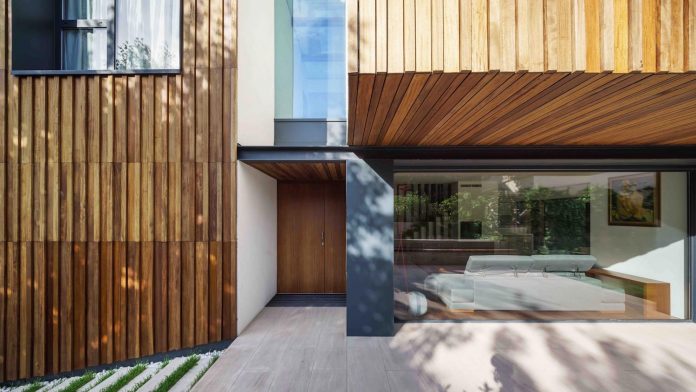New building that aesthetically expresses its residential function in a contemporary way with a minimal energy waste
Architects: Corina Dindareanu
Location: București, Romania
Year: 2016
Area: 4.348 ft²/ 404 m²
Photo courtesy: Cosmin Dragomir
Description:
“The building is located in a neighborhood of courtyard houses, a mix of volumes and styles where 4-5 storey interwar buildings can be seen next to modest ground floor longhouses. Each of them expresses sincerely in its formal aspects the time when it was built as well as its residential function, which is also the aim of the new construction. The plot is situated in the central area of Bucharest, in a protected urban zone. The project is a private commission for a single family house, nevertheless even in the smallest interventions there is a part of the project that concerns the insertion of a new piece in the urban fabric that we have to deal with. In this case the building was visually very present in the intersection of Mantuleasa and Dimitire Racovita street, and the volume attempts to respond to this situation. The street façade is more “opaque” responding to the north-western orientation, but the building opens gradually as it evolves towards the courtyard area: the side façade features the entrance, as in all the typical longhouses in this area, mirroring the neighboring house, while the backyard façade opens completely to embrace the green space of the garden.
The house consists of a compact volume of 11m height (height regime being at least 10m max. 15m), with ground floor, 1st and 2nd floor (partially) facing the street, similar in size to the adjacent buildings, and a lower body (only ground floor) with a light metal structure and sliding glass walls, which along with the surrounding pergolas allows the living room to merge with the garden.
A narrow zone of the house next to the dividing property wall gathers in a 2m wide band all the services: bathrooms, kitchen, storage, installations.
Following the principles of sustainability, for minimal energy waste the use of a ventilated façade was a priority from the very beginning. Wood was chosen as a low environmental impact material, as well as an envelope that ideally combines the environmental requirements with the aesthetical ones, being a warm, domestic, traditional material suitable for residential function. The same wood finish was also used inside the house to emphasize the access zone and vertical movement (using vertical ladders identical to those on the facade) and also as a floor finish. For the flooring in bathrooms, kitchen, and the lower living area, natural stone was used, the same as outside, to obtain the continuity of this interior with the outdoor terrace and the garden.
Controversy may be inherent when acting in a protected urban area: the project intends to enrich the fabric of this part of the city with a new building that aesthetically expresses its residential function in a contemporary way, yet establishes a dialogue with the older neighboring houses, with the urban space created at the intersection of the streets, with the adjacent courtyards that merge with garden of the new house.”















